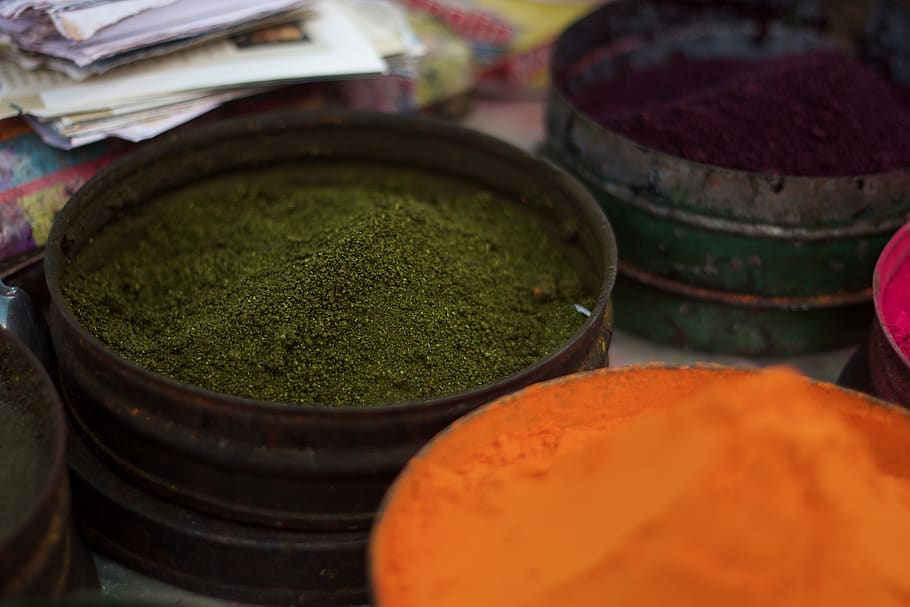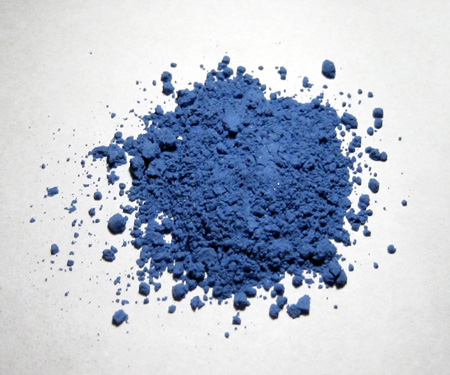The key difference between organic pigments and inorganic pigments is that organic pigments are made of carbon chains and ring structures and are comparatively expensive, whereas inorganic pigments are made of minerals and are comparatively cheap.
We use the terms organic and inorganic pigments to describe colors. Colors play an important role in our day to day life – in clothing, cosmetics, decorations, food, communication methods, etc. Typically, the textile industry and cosmetic manufacturing uses pigments of colors. These pigments are usually insoluble solids that can improve appearance and give a color to a certain medium. Due to the insoluble nature of these pigments, we can grind the pigment into a fine powder before adding it to the medium. Pigments can produce color by changing the way of light transmission through the medium and by reflecting off a surface by absorbing some wavelengths of light.
CONTENTS
1. Overview and Key Difference
2. What are Organic Pigments
3. What are Inorganic Pigments
4. Organic Pigments vs Inorganic Pigments in Tabular Form
5. Summary – Organic Pigments vs Inorganic Pigments
What are Organic Pigments?
Organic pigments are compounds based on carbon chains and rings. Some of these pigments are useful as stabilizers. The string carbon chain structures in these organic pigments make them highly stable. Usually, these pigments are made from animals, vegetables, or through synthetic routes. Traditionally, organic pigments were made from flora and fauna, but most of the modern pigments are made from synthetic processes. During these synthetic routes, we can use aromatic hydrocarbon compounds such as coal tar and other petrochemicals as reactants.

Organic pigments have color quality because of their transparency and having bright, rich colors. However, these pigments are usually expensive compared to inorganic pigments. Moreover, there are many varieties of organic pigments, but they hold up poorly when exposed to light. Most of these pigments tend to fade with light and heat over time.
What are Inorganic Pigments?
Inorganic pigments are dry ground minerals that include metals and metallic salts. Therefore, these pigments are more opaque and more insoluble compared to organic pigments. Generally, these pigments are the most common type of pigments used in industries due to their lightfastness and low cost. Also, these pigments show excellent fade resistance. In other words, inorganic pigments are resistant to color fading upon exposure to light, air, and heat. These pigments are cheap to produce in large quantities due to the relatively simple chemical reactions which are needed for their production.

However, there are some drawbacks to using inorganic pigments as well. For example, poor tonality, which means these pigments tend to produce colors that are often dull, and we can enhance the brightness by mixing them with organic pigments. Moreover, inorganic pigments are toxic and tend to be more harmful to the environment than other pigment types because of the composition of salts of lead.
Some examples of inorganic pigments include titanium dioxide, white extender pigments, black pigments, chromium pigments, cadmium and metallic pigments, iron blue, etc.
What is the Difference Between Organic Pigments and Inorganic Pigments?
The key difference between organic pigments and inorganic pigments is that organic pigments are made of carbon chains and ring structures and are expensive comparatively, whereas inorganic pigments are made of minerals and are comparatively cheap. Moreover, inorganic pigments are more toxic than organic pigments due to the presence of lead salts. In addition to these differences, organic pigments have rich and bright colors while inorganic pigments have dull colors.
The following infographic presents the difference between organic pigments and inorganic pigments in tabular form for side by side comparison.
Summary – Organic Pigments vs Inorganic Pigments
Pigments can produce color by changing the way of light transmission through the medium and by reflecting off a surface by absorbing some wavelengths of light. There are two types of pigments as organic and inorganic pigments. The key difference between organic pigments and inorganic pigments is that organic pigments are made of carbon chains and ring structures and are expensive comparatively, whereas inorganic pigments are made of minerals and are comparatively cheap.
Reference:
1. “Organic Pigment.” An Overview | ScienceDirect Topics.
Image Courtesy:
1. “Color, dust, pigment, dye, natural dyes, colorful, green, orange, texture, background” (CC0) via Pxfuel
2. “Natural ultramarine pigment” (Public Domain) via Commons Wikimedia
ncG1vNJzZmivp6x7pbXFn5yrnZ6YsqOx07CcnqZemLyue9ahmK1lmah6tbTEZpuinpaav6a6wp5km52krLKmuoyoqaCZnp6wbrzIoKSepqSoeqK6w2agp6einK6vtcJmp6KfnZq7tb%2BO